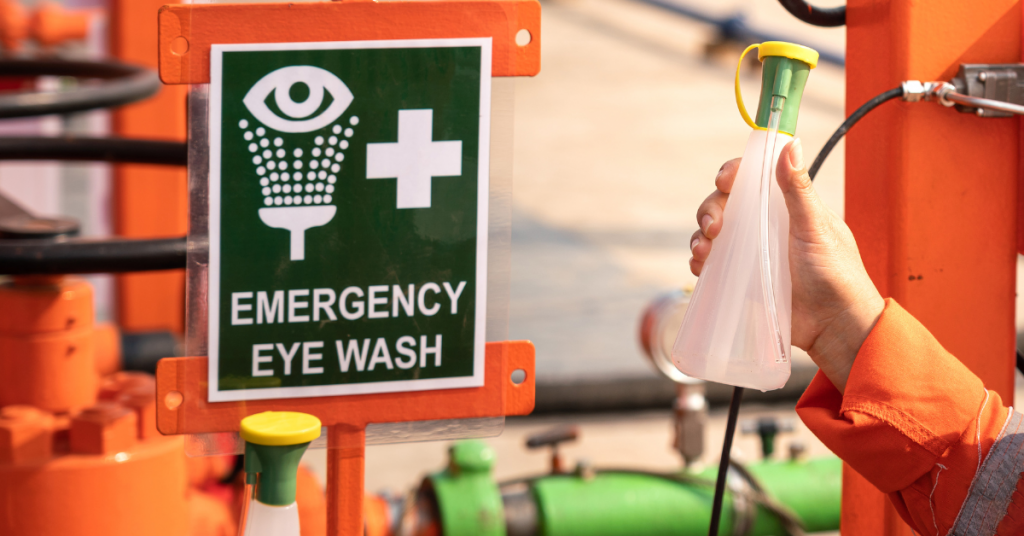
Accidents Happen Without Warning
In places where chemicals, dust, or debris are present, it doesn’t take much for something to go wrong. A splash, a spill, or even a strong gust of wind can send harmful particles into someone’s eyes. When that happens, seconds matter. That’s where an eye wash station becomes one of the most useful pieces of safety equipment on site.
What Is an Eye Wash Station?
An eye wash station is a unit designed to rinse the eyes quickly and safely in case of contact with hazardous substances. It usually features one or two water outlets that spray a soft flow directly into the eyes, helping to flush out chemicals, dust, or small objects. These stations are placed in areas where exposure risks are higher, like workshops, chemical storage rooms, and industrial kitchens.
Simple Design With a Big Impact
Most units are made to be very easy to use. A worker only needs to reach the station, turn it on, and keep their eyes open under the flow. Some models are fixed to walls and connected to the plumbing. Others are portable, filled with sterile fluid, and can be placed closer to risky zones. What they all share is the goal of helping someone act quickly when there’s no time to waste.
Why They’re So Important
Damage to the eyes can happen fast. In many cases, the longer the substance stays in the eye, the worse the harm. Rinsing it out quickly can help avoid long-term problems, pain, or even permanent injury. That’s why eye wash stations are required in many workplaces. It’s not just about safety rules. It’s about being ready to act when every second counts.
Where You Might Need One
Workshops that use oils, cleaning fluids, or grinding tools are a good example. So are warehouses that handle bulk powders or aerosols. Kitchens that deal with hot oils and chemicals for cleaning are also places where eye injuries can happen. Even school science labs or garages at home benefit from having something nearby to rinse out the eyes in a hurry.
Maintenance Is Simple but Important
An eye wash unit doesn’t help if it isn’t working. It’s good practice to test the system regularly. This means checking that water flows properly, that the nozzles are clean, and that portable units aren’t expired or damaged. Keep the area around it clear, and mark it well so everyone knows where it is. A fast response means nothing if no one can find the station.
Training Makes a Difference
Having the gear isn’t enough. People should be shown how to use it. During safety briefings or toolbox talks, take a few minutes to go over where the station is and what to do during an emergency. When someone’s eyes are burning or they’re in a panic, knowing what to do can make all the difference. Training builds confidence and reduces panic.
Different Types for Different Needs
Fixed units are the most common type. They’re connected to plumbing and always ready to go. Some models come with foot pedals while others use hand levers. In places where water supply isn’t stable or space is tight, portable units work well. These are filled with pre-treated water or solution and don’t need plumbing. There are also compact kits that can be taken to different worksites.
A Small Cost With a Big Benefit
Compared to many other safety items, eye wash systems don’t cost a lot. But they offer something very important, a fast, easy way to help someone when their vision might be in danger. In many industries, it’s considered a basic part of the safety setup. It shows that a workplace takes people’s health seriously.
A Safer Workplace for Everyone
It doesn’t matter how big or small the business is. If there’s a risk of something going into someone’s eyes, there should be a plan to deal with it. A proper eye wash station is a simple step that brings peace of mind. Being ready means you’re not left scrambling in the middle of a problem, and that can make all the difference.